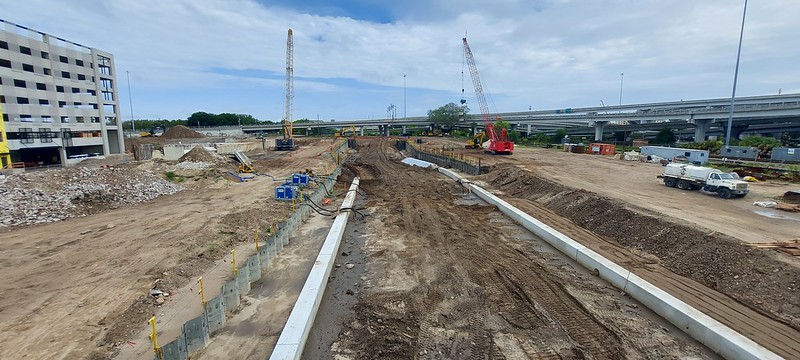Infra
THE JAXSON | 6 major urban core infrastructure projects – Jacksonville Today

Jacksonville’s urban core continues to grow. Here are six major infrastructure projects currently under construction in or near Downtown.
Edgewood Avenue roadway improvements
Construction is underway on Edgewood Avenue in the Murray Hill neighborhood. Funded by the Florida Department of Transportation, the $7.66 million project will improve Edgewood Avenue South from U.S. 17 to Lenox Avenue and Lenox Avenue from Cassat Avenue to Edgewood Avenue South. An emerging pedestrian-friendly corridor lined with local shops, boutiques, bars and restaurants, the project involves reducing the number of travel lanes from four to two and installing bike lanes and shared-use lanes. Additional enhancements include three new mid-block crossings with flashing beacons as well as on-street parking. Construction began in summer 2023 and is expected to be completed in summer 2024.
I-95 widening from Emerson to Atlantic

The Florida Department of Transportation is in the process of widening I-95 from south of Emerson Street to Atlantic Boulevard. The project includes widening the interstate to 10 lanes; reconfiguring the interchange at Emerson Street; resurfacing Emerson Street from U.S. 1/Philips Highway to Spring Park Road; and adding and replacing sound walls. The $247 million design-build project started in August 2023 and is expected to be completed in spring 2028.
Interstate 10 widening

The Florida Department of Transportation is expanding I-10 from I-295 to I-95 through Jacksonville’s Westside. Construction on the $176.4 million project began in summer 2020 and is anticipated to be complete in early 2025. When complete, I-10 will include up to 10 lanes. Other improvements include the construction of noise barrier walls, a pedestrian tunnel at Day Avenue, enhanced drainage, sidewalks, lighting and signage.
McCoys Creek greenway and restoration

Channelized in 1930, McCoys Creek has been historically known as a flood-prone creek forming the border between Downtown and Brooklyn. Through the collaboration of Groundwork Jacksonville and the city, McCoys Creek is being restored to remedy flooding, create neighborhood-friendly spaces, improve recreational opportunities, and to protect the natural environment. Major components of the $105.4 million project include the permanent closure of portions of McCoys Creek Boulevard, reconstruction of the Stockton and King Street bridges, creek restoration and Emerald Trail construction. Ongoing restoration work involves restoring the waterway to a meandering natural channel and expanding the floodplain with the addition of natural water containment features, such as lagoons and tidal pools. The former road bed of McCoys Creek Boulevard will be replaced with a new segment of the Emerald Trail. When complete, the trail component of the project will connect the historic Westside neighborhoods of Lackawanna, Mixon Town, Campbell Hill and Brooklyn to the Northbank Riverwalk.
Main Street (U.S. 17) roadway improvements

During fall 2023, the Florida Department of Transportation began work on a $20.78 million project to rehabilitate Main Street (U.S. 17) north of Downtown Jacksonville. Affecting the neighborhoods of Springfield, Brentwood, Pearl Court and Panama Park, the project is centered on Main Street from State Street to the Trout River. Planned improvements include road resurfacing, drainage, curbs and gutter work, traffic signal and lighting upgrades, highway signing, guardrails, sidewalk/bicycle path restoration, and landscape work. The project is anticipated to be completed in fall of 2024.
Park Street ‘road diet’

A long awaited Downtown Investment Authority project is underway on Park Street in Brooklyn. A major historic thoroughfare in the neighborhood, Park Street’s “road diet” project will involve significant modifications to enhance pedestrian and bicycle connectivity and improve vehicular safety. When complete in summer 2025, Park Street will be reduced from four to two lanes. The additional space saved by reducing the roadway width will allow for wider sidewalks, a cycle track, street trees and pedestrian crosswalks. Another goal of the enhanced pedestrian experience along the Park Street corridor is to promote economic development in the surrounding neighborhood.







:max_bytes(150000):strip_icc()/roundup-writereditor-loved-deals-tout-f5de51f85de145b2b1eb99cdb7b6cb84.jpg)


